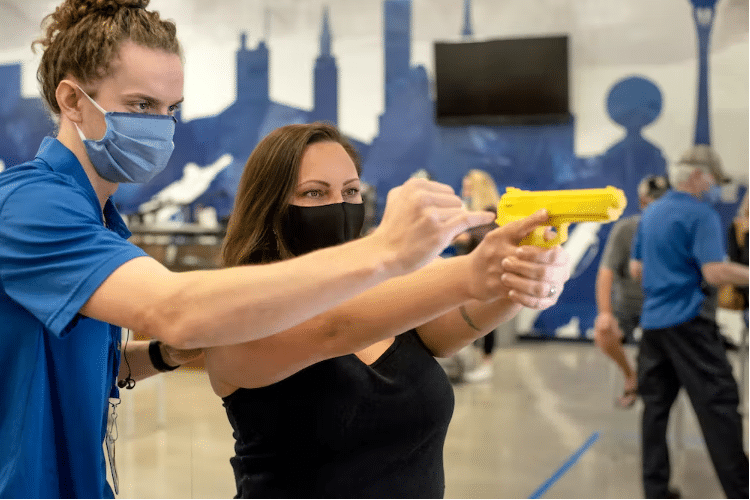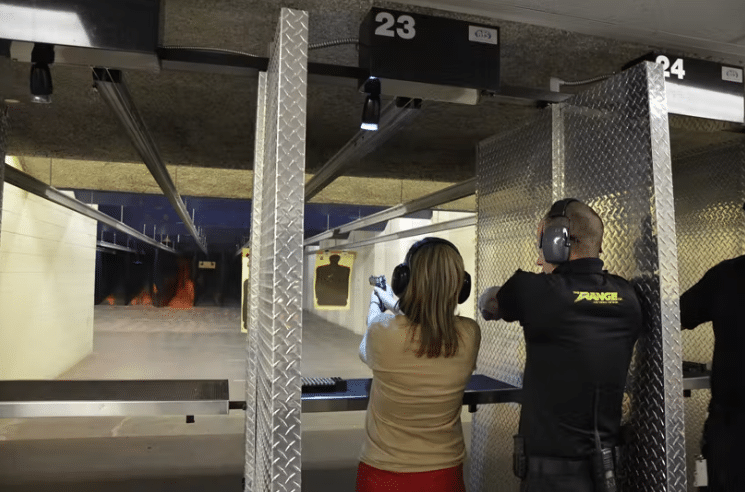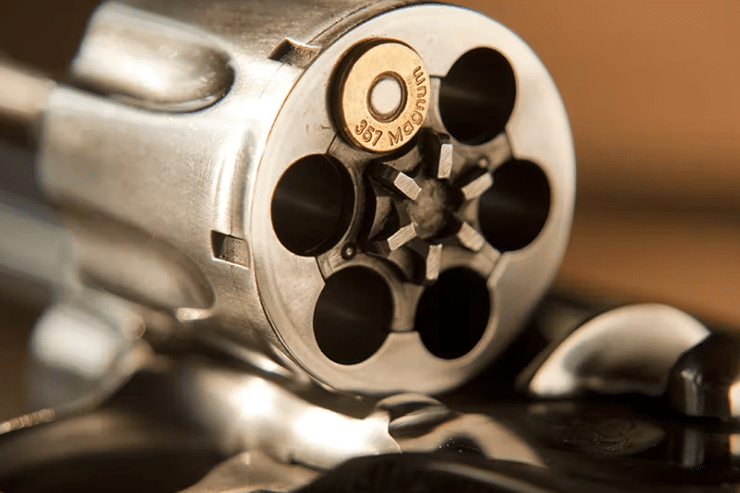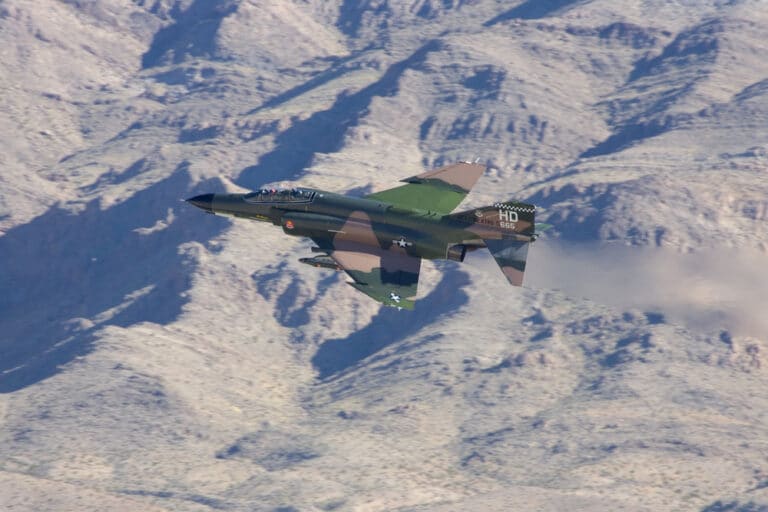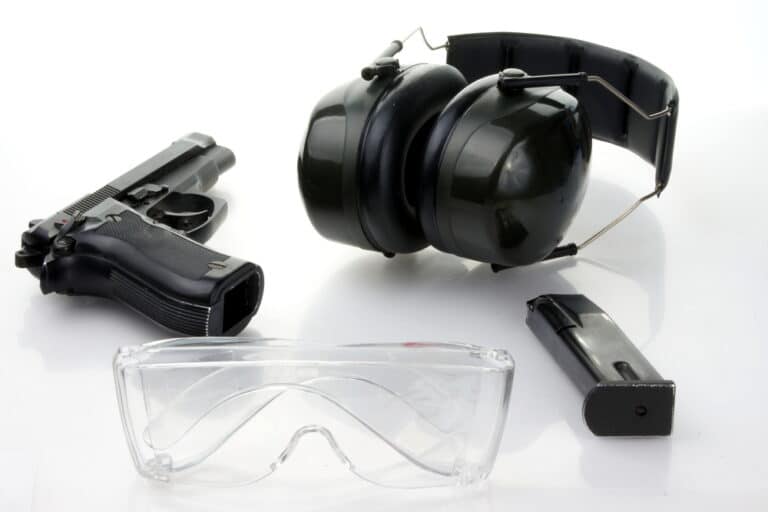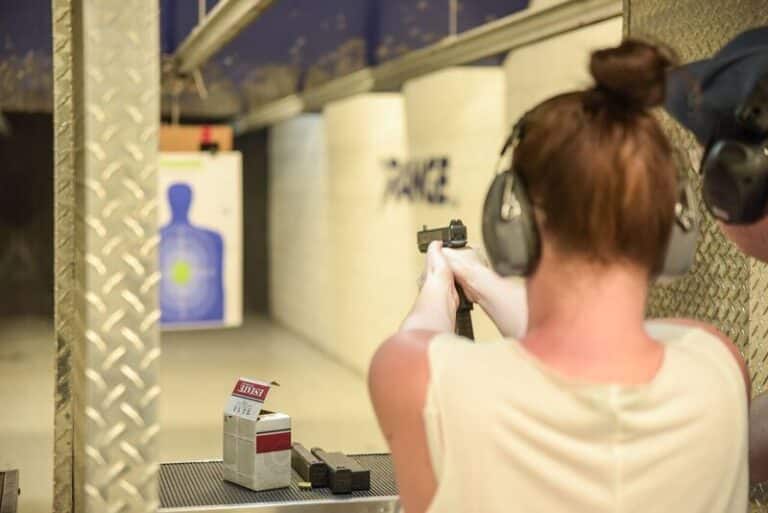What Are the 7 Fundamentals of Marksmanship?
Marksmanship is a precise skill that requires focus, practice, and routine steps for safe and accurate shots. Learning to handle a firearm properly and refining your craft will help you become a safer, more precise gun handler. Our certified firearms instructors share the fundamentals of marksmanship and why each is important.
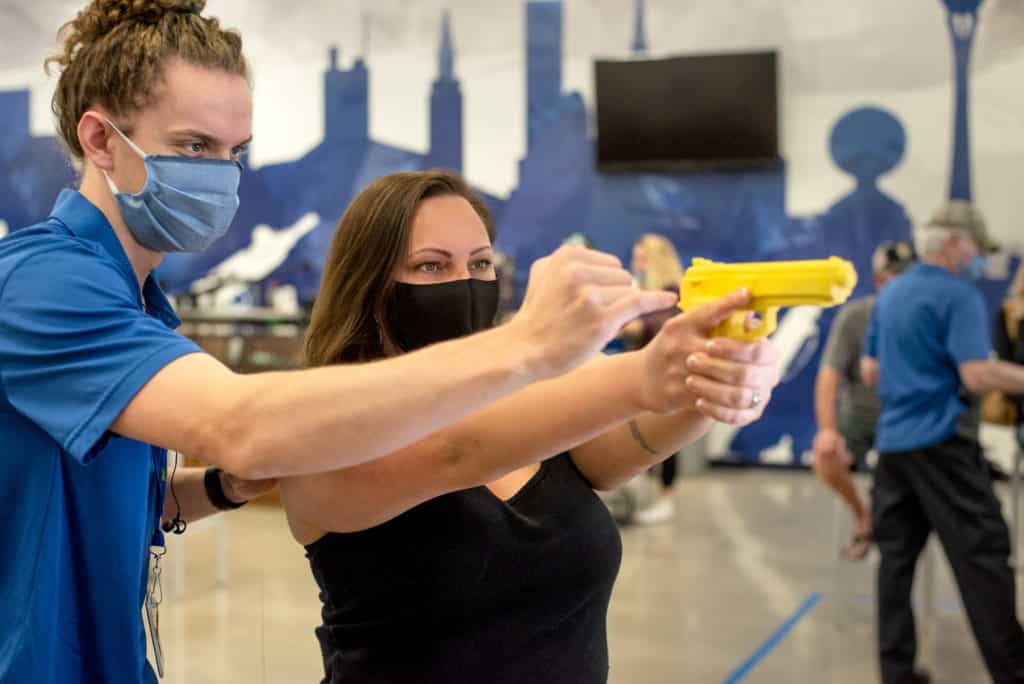
Gun Safety Comes First
Before you learn to shoot a gun, there are some critical gun safety rules to follow every time you hold the rifle. Whether you’re heading to an indoor shooting range or outdoor target practice, always keep these basic safety measures in mind:
- Handle all firearms as if they are loaded.
- Keep the gun unloaded until ready to use.
- Don’t point the gun at anything you don’t intend to destroy.
- Keep your finger off the trigger until ready to shoot.
- Know your target and what is beyond your target.
Want a professional instructor to help you learn the basics of shooting? Register for a 1:1 training class for expert guidance!
The 7 Shooting Fundamentals
If you’re new to shooting, you’ll be learning about the seven fundamentals that make up a good shot. Each of these elements should be followed for every attempt to improve and maintain consistency. Here’s what you need to know:
1. Stance
Stance is the first fundamental for every shot. Stance refers to the position of your feet and body in relation to the target. All other shooting fundamentals are built upon a steady position when firing. Different shots require different stances, including:
- Bullseye – For the bullseye shooter using only one hand on the gun, the stance is at a 45-degree angle to the target with the feet shoulder-width apart. The thumb of the non-firing hand should anchor securely in the pocket to prevent the free arm from swaying and throwing your shot off-balance.
- Weaver – This stance is for the action shooter with both hands on the gun. The feet are at an angle to the target, the strong arm is straight, and the weak arm is bent. The weaver stance helps lock in the upper body and provides tension in the pistol grip for better recoil control.
- Isosceles – The body is facing directly toward the target in this stance. Both hands are on the gun, and arms are straight out in front of the shooter. The upper body leans slightly forward.
2. Grip
When it comes to grip, the most important thing to remember is that you want to grip with enough strength to prevent the pistol from moving during the shot but relaxed enough so that your hand doesn’t shake from the pressure. Here are some tips for better gun grip:
- Make a “v” with your dominant hand; your thumb should be on one side and all the other fingers on the other.
- The gun is placed in the center of the v with the middle, ring, and pinky fingers wrapped around the pistol’s grip.
- Place the area between the joint and the tip of the index finger pad on the trigger. Do not over insert the finger; otherwise, it may cause the other fingers to move and interfere with your shot when you squeeze the trigger.
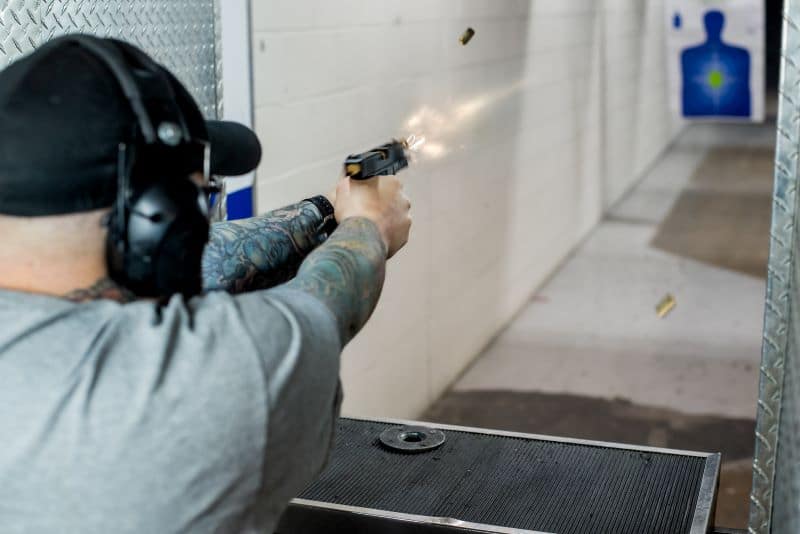
3. Sight Alignment
Sight alignment refers to the process of lining up the rear and front sights on the gun. For a well-aimed shot, the shooter must pay attention to the rear sight aperture and how it lines up with the front sight, with most of the focus on the front sight post. The actual target will appear blurry if done correctly as the shooter’s attention is focused on the front sight post.
Not all guns have sight-aligned requirements for accuracy, such as red dot sights, which emit an illuminated dot, or a prism sight where the sight places target objects in a circle for aim. If there are no sights to align, the shooter then focuses on a sight picture to prepare the shot.
4. Sight Picture
Any shooter who wants a well-aimed shot must have the correct sight picture1. The sight picture is the image seen when the sights align with the target. This is true for all types of sights when holding a rifle, handgun, or any other firearm. Sight picture does not rely on the natural ability to shoot. Instead, the shooter utilizes a precise system to center objects in preparation for a shot.
Ready to up your game? Come practice shooting fundamentals at The Range 702 Las Vegas!
5. Breathing
In any type of shooting, breath control is extremely important. In general, it’s good to keep a calm, regular breath throughout your preparation, aim, and fire. This helps to:
- Oxygenate the blood – Regular breathing adequately oxygenates the blood, which sharpens vision and keeps you alert.
- Relaxes the nerves – Regular breaths help to relax the muscles and nerves for optimal shots.
- Steady movement – Prevent jerky movements and forced breathing that can quickly mess up your shot.
The optimal moment to pull the trigger is when your breathing cycle reaches a natural pause, like at the end of an exhale. Your aiming breath should be calm and consistent, and the ideal shot fits into your breathing rhythm.
It’s not a good idea to hold your breath in or force your breath out. This can create unnecessary tension in your chest muscles or make your body feel like it needs to gasp for air. Working with your natural breathing rhythm allows for a more relaxed shot with less tension and movement in the body.
6. Trigger Control
Trigger control involves pressing the trigger to complete the shot without upsetting your sight alignment. There are two main issues when it comes to proper trigger control:
- Pulling – Pulling the gun is caused by placing too much finger on the trigger, causing a hooked finger that pulls the gun to the side when the shot is discharged. This causes your shot to hit to the right of the target.
- Pushing – Pushing is caused by too little finger in the gun, which creates a side push of the trigger instead of straight back, producing a shot that will be hitting left of the target.
The ideal trigger control position allows for independent movement of the index finger with trigger contact on the finger’s pad. This part of the finger is most sensitive and allows for accurate control and discharge of the gun.
View this post on Instagram
7. Follow Through
Once you’ve discharged the gun, you want to be sure to follow through with each shot. Follow-through is when you end the shot by keeping the trigger finger fully depressed until your gun has completed recoil and the shooter’s sights are back on the target. Once your sights are back on target, then you can release the trigger.
Follow-through is especially important when more than one shot or sustained fire is the goal. With each follow-through, focusing on trigger control, breath, grip, and aim prevents the shooter from abandoning the shot too early, as well as returning to a pre-firing position to prepare for the next shot.
CTA: Book your Las Vegas shooting range experience today at The Range 702!
Practice Shooting at The Range 702 in Las Vegas
Learning the fundamentals of marksmanship is a crucial first step in shooting a gun with accuracy and consistency. All of these take practice to master but will soon become second nature.
Now it‘s your turn to get some practice! Visit The Range at 702 and learn about our many Las Vegas gun range packages that will transform you from a shooting newbie to a confident firearms expert. We provide professional guidance at top-notch facilities to take your target shooting to the next level. Contact us today to reserve your lane!
Sources:
1Integrated Publishing. Correct Sight Picture. Retrieved 11 February 2022.

